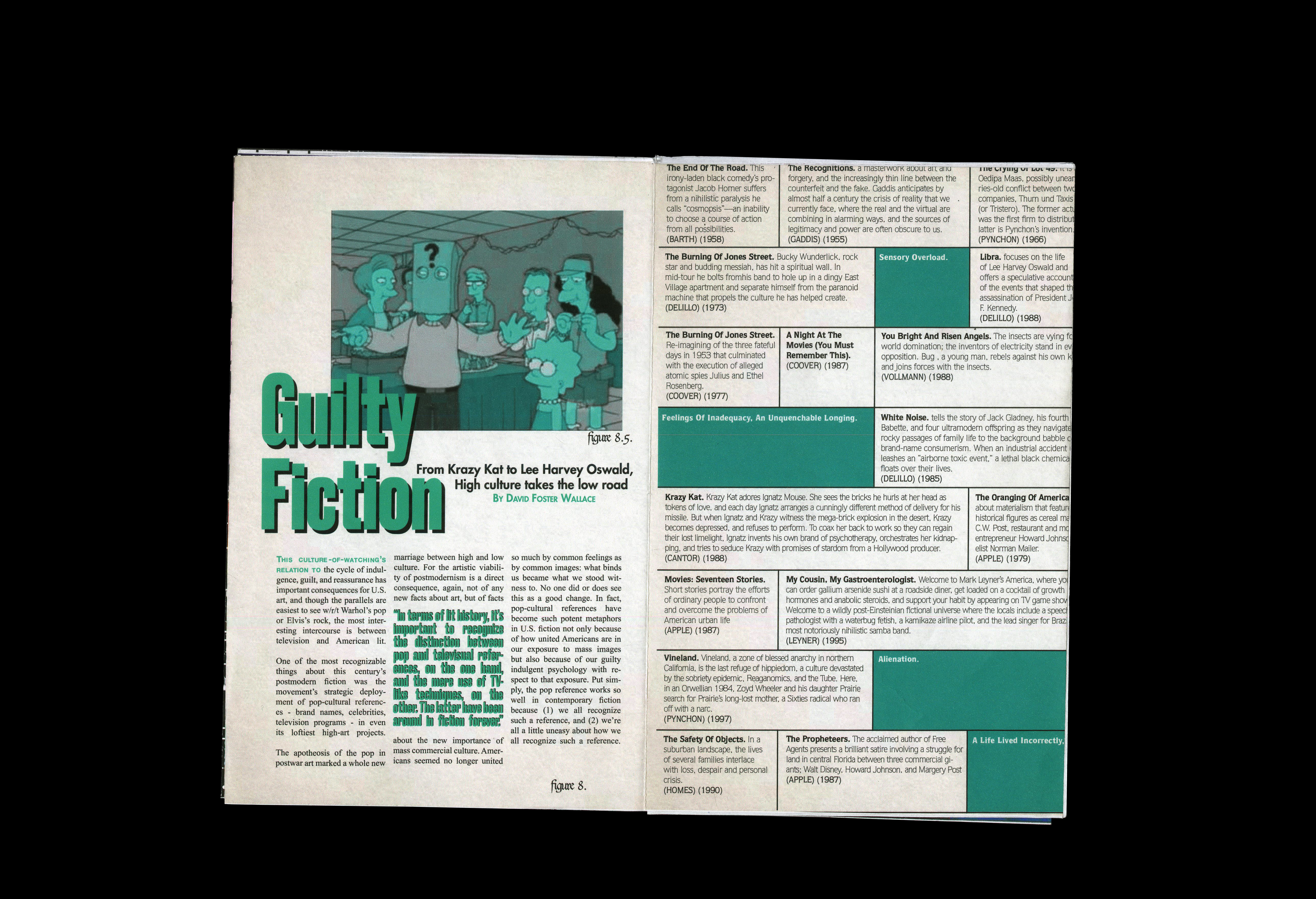
EDITORIAL DESIGN
E. UNIBUS PLURAM: TELEVISION AND U.S. FICTION
E. Unibus Pluram is a groundbreaking and thematically sprawling essay by the late David Foster Wallace concerning advertising, consumerism, television, and the cultural ennui and loneliness these things both bring about and promise to deliver us from. Standing on the shoulders of Marshall McLuhan and Plato and Mark C. Miller, Wallace attempts to diagnose an oft-overlooked flaw in postmodern fiction: in all its attempts to truly send up contemporary mass culture in all its cheap artifice and hollow surface, it ultimately fails to land a killing blow. (Read it HERE🔗)

Wallace’s thesis concerns postmodern fiction, or for the uninitiated, the era of literary fiction credited to authors like Don DeLillo, Thomas Pynchon, AM Homes, Robert Coover, and others, whose work all shares a common fixation on the conditions of modern life brought about by a culture dictated by advertising and disseminated by television. The uncanny theatricality of TV commercials, the airbrushed impossibility of fashion models, the schizophrenic pastiche of television, and the glossy panacea on sale for 5 easy payments of 9.99 (call now, operators are standing by).
The critical human impulse is to meet a ridiculous situation with a leveling dose of irony, but what happens when the target of that irony is too swift and adaptable to be taken down by irony? What happens when any critique of that target quickly becomes subsumed by the target itself into some self-referential meta narrative? Or to put it another way: what if our mass culture is better at making fun of itself than even our sharpest cultural critics? What effect does that ambient irony have on our collective psyche?
Translating an essay like this into a zine meant identifying and representing not only its central argument, but also the essence of the televisual culture it seeks to understand: it’s disorienting incoherence, its slick presentation, and its penchant for self-effacing humor. In that spirit every spread is different from the last. From front to back the idea of a coherent style is nowhere to be found. Like television itself it constantly points at its own existence, incorporating its own imagery and references to its own programming and iconography. Zooming in to reveal the pixelation and artifacts and blemishes conventional wisdom says it should hide. Its ironic winking all the way down.
Translating an essay like this into a zine meant identifying and representing not only its central argument, but also the essence of the televisual culture it seeks to understand: it’s disorienting incoherence, its slick presentation, and its penchant for self-effacing humor. In that spirit every spread is different from the last. From front to back the idea of a coherent style is nowhere to be found. Like television itself it constantly points at its own existence, incorporating its own imagery and references to its own programming and iconography. Zooming in to reveal the pixelation and artifacts and blemishes conventional wisdom says it should hide. Its ironic winking all the way down.






-
©
Peter Dommermüth, 2016–2021.
Unless otherwise noted, all images on these pages are copyrighted.
Peter Dommermüth, 2016–2021.
Unless otherwise noted, all images on these pages are copyrighted.